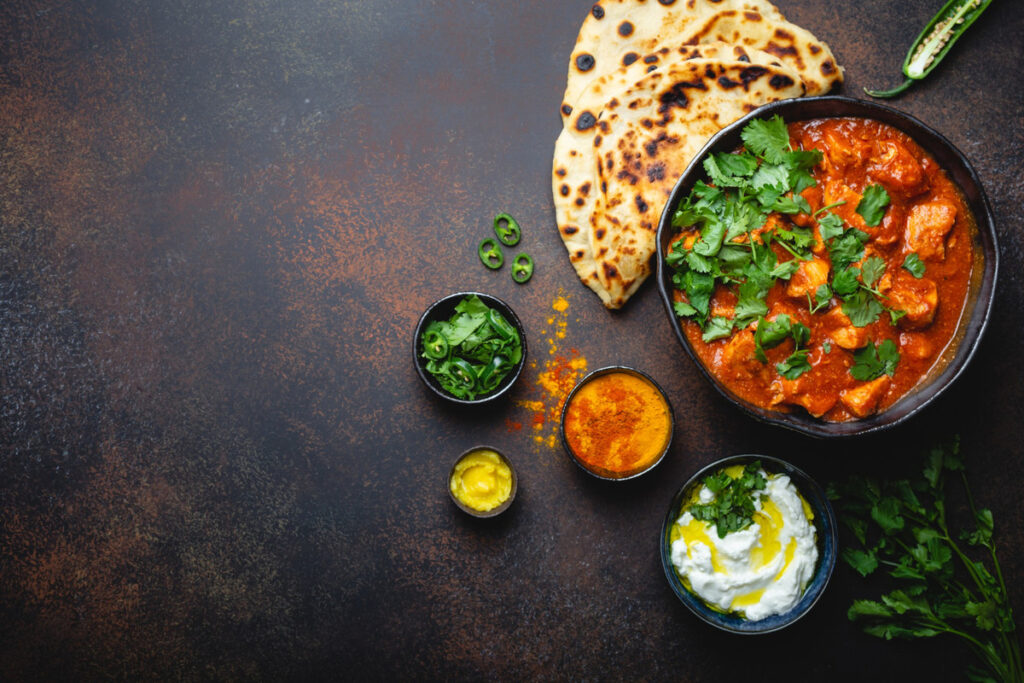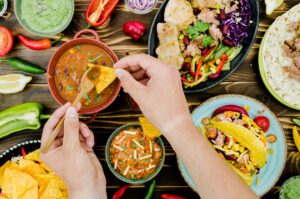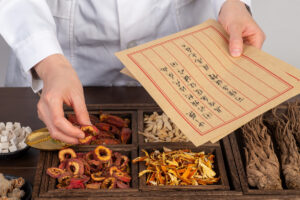Indian food for diabetes can be both satisfying and health-supportive when recipes are adapted with the right ingredients and preparation methods.
Traditional Indian cuisine often features carbohydrate-rich staples, but by choosing lower glycemic index options and balancing macronutrients, it is possible to enjoy flavorful meals without compromising blood sugar control.
A thoughtful approach to ingredient selection, portion size, and cooking techniques can transform everyday Indian dishes into diabetes-friendly meals.
This article explores the best food choices, beneficial cooking habits, and key spices for managing diabetes while enjoying Indian cuisine.
Indian Food for Diabetes
Eating Indian food with diabetes management in mind begins with understanding the glycemic impact of different ingredients.
Low-GI foods release glucose slowly into the bloodstream, helping to prevent sharp spikes in blood sugar.
Choosing complex carbohydrates, lean proteins, healthy fats, and plenty of non-starchy vegetables can create a balanced meal that supports stable energy levels.
Meal composition should also prioritize portion control to avoid excess calorie intake.
By combining nutrient-dense foods in proper ratios, Indian meals can be both delicious and beneficial for people with diabetes.
Whole Grains and Low-GI Staples
Refined grains like white rice and maida (white flour) can cause rapid increases in blood sugar.
Replacing them with whole grains such as brown rice, quinoa, whole wheat roti, and millet varieties like bajra and jowar can lower the glycemic load of a meal.
These grains are rich in fiber, which slows digestion and enhances satiety.
Whole wheat chapati or jowar roti served with vegetables and legumes makes for a satisfying, diabetes-friendly option.
Millets are also gluten-free, making them suitable for those with gluten sensitivity.
Combining these grains with protein-rich foods further supports blood sugar control.
High-Fiber Legumes and Pulses
Legumes are a cornerstone of Indian cuisine and an excellent choice for diabetes management.
Lentils, chickpeas, kidney beans, and mung beans are high in both protein and dietary fiber.
They provide sustained energy release and help reduce post-meal glucose spikes.
Popular dishes like dal, chana masala, and rajma can be made healthier by using minimal oil and avoiding heavy cream.
Sprouted legumes can increase nutrient bioavailability and aid digestion.
Pairing legumes with whole grains creates a complete protein source ideal for balanced blood sugar regulation.
Non-Starchy Vegetables and Leafy Greens
Non-starchy vegetables are nutrient-dense and low in calories, making them ideal for people with diabetes.
Okra (bhindi), spinach (palak), cauliflower (gobhi), and bitter gourd (karela) are particularly beneficial for blood sugar control.
These vegetables supply vitamins, minerals, antioxidants, and soluble fiber.
Bitter gourd has been traditionally valued in Ayurveda for its potential glucose-lowering effects.
Steaming, roasting, or lightly sautéing vegetables in healthy oils preserves nutrients and reduces added calories.
A plate filled with half non-starchy vegetables, one-quarter whole grains, and one-quarter protein is a simple formula for balanced meals.
Healthy Cooking Oils and Methods
Cooking methods and oil choices can significantly impact the healthiness of a dish.
Mustard oil, extra virgin olive oil, and coconut oil are healthier alternatives to hydrogenated or refined vegetable oils.
These oils provide beneficial fatty acids and antioxidants that support heart and metabolic health.
Avoid deep-frying, as it increases calorie density and adds unhealthy trans fats.
Instead, choose steaming, roasting, grilling, or stir-frying with minimal oil.
Tempering spices in small amounts of healthy oil can enhance flavor without overloading on fat.
Spices and Herbs with Blood Sugar Benefits
Indian spices not only add aroma and taste but also offer health benefits relevant to diabetes.
Turmeric contains curcumin, known for its anti-inflammatory and antioxidant properties.
Cinnamon may improve insulin sensitivity and help lower fasting blood sugar.
Fenugreek seeds are rich in soluble fiber, which can slow carbohydrate absorption.
Ginger supports digestion and may reduce inflammation, while coriander seeds offer mild diuretic and digestive benefits.
Using these spices regularly in cooking adds both flavor and functional health value to meals.
Foods and Habits to Avoid in Indian Cooking for Diabetes
Certain foods and habits can hinder blood sugar management and should be minimized.
Refined flour products like naan, puri, and white bread can cause rapid glucose spikes.
Sugary desserts such as gulab jamun, jalebi, and laddoo should be reserved for rare occasions.
Fried snacks like samosas, pakoras, and bhujia are calorie-dense and can contribute to weight gain and insulin resistance.
Heavy cream-based gravies increase saturated fat intake, which can negatively impact cardiovascular health.
Skipping meals and then overeating can cause large fluctuations in blood sugar, so aim for regular, balanced eating patterns.
Creating a Balanced Indian Meal Plan for Diabetes
A diabetes-friendly Indian meal plan should balance carbohydrates, proteins, and fats in every meal.
Breakfast could include vegetable upma made with semolina alternatives like quinoa, paired with low-fat yogurt.
Lunch might feature brown rice with dal, sautéed greens, and cucumber salad.
Dinner could be a whole wheat roti with chana masala and roasted vegetables.
Snacks can include roasted chickpeas, vegetable sticks with homemade hummus, or a handful of nuts.
Hydration is also key—drink plenty of water and limit sugary beverages.
Mindful portion control ensures that even healthy foods are consumed in moderation.
How GlycoFortin Can Support Blood Sugar Management Naturally
In addition to dietary adjustments, natural supplementation can support glucose control.
GlycoFortin is a liquid supplement formulated with plant extracts and minerals known to promote healthy blood sugar levels.
Its ingredients—such as chromium, green tea, ginseng, Gymnema Sylvestre, maca root, and grape seed extract—work together to improve insulin sensitivity and reduce glucose absorption.
These compounds also combat inflammation and support liver and pancreatic function.
GlycoFortin is easy to take daily and aligns with a clean-eating lifestyle as it is non-GMO and free from synthetic stimulants.
Incorporating GlycoFortin alongside a balanced Indian diet can help stabilize energy, reduce cravings, and promote long-term metabolic health.
Enjoy Flavorful Indian Cuisine While Supporting Blood Sugar Health
Adapting Indian food for diabetes is about making thoughtful substitutions and mindful cooking choices.
From choosing whole grains and fiber-rich legumes to incorporating beneficial spices, these strategies can make traditional meals both healthy and enjoyable.
Combining these practices with GlycoFortin provides natural support for maintaining stable glucose levels.
Visit the official GlycoFortin website to see how it can fit into your diabetes management plan and help you enjoy vibrant, flavorful meals every day.









